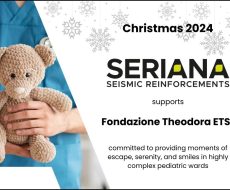
October 27, 2022
Possible obstacles during an anti-seismic intervention
When there is a need to intervene on an existing building, in addition to studying the structure from an engineering point of view, it is important to also examine the contexts that could interfere with the implementation of the project under consideration.
These factors must be taken into consideration in order to create a project that allows teams to work well and safely.

Lack of documentation
The first inconvenience that a designer may encounter is the lack of technical documentation. This difficulty is particularly accentuated if the construction of the building dates back to before 1971, the year in which law 1086 was promulgated which required, and still requires, companies to report structural works. In the event that reinforced concrete has been reported, the pertaining offices can be asked to access the documents and check documentation, while if the information is lacking, the only solution is to implement an investigation on the materials and carry out a survey on the dimensions of the structural elements.
Building structure
Once the information on the architectural structure of the building has been obtained, it is necessary to identify the type of anti-seismic intervention suitable for it. Given the vastness of types and materials, this article examines a local reinforcement intervention for pre-fabricated buildings, aimed at eliminating the risk of loss of support of the elements in the presence of telluric activity.
Generally, this approach consists of creating anti-seismic devices that include securing the various pre-fabricated elements, including those between the main structure and the infill panels. A factor to examine is the variety of types of pre-fabricated elements present in the building, which create a plurality of “shapes” on which the project will have to be based. A particularly important aspect is also the potential presence of reinforcement inside the elements, which could make drilling holes complex.
Presence of physical encumbrances
In addition to the difficulties related to the configuration of the building, it is possible to encounter non-structural obstacles capable of affecting the anti-seismic device design and implementation. A classic example is the presence of machinery. Hypothesizing about dismantling all or part of the machinery appears to be counterproductive, as the costs due to dismantling and reassembling of machinery and those relating to a possible production stoppage are generally higher than the financial outlay for the safety intervention alone. Consequently, it is essential to design the device to bypass such interference.
It is necessary to note that the presence of machinery and equipment also limits the free circulation of the lifting platforms (PLE) for securing the devices, thus causing an increase in time. Furthermore, if it is not possible to intervene with lifting platforms, it is necessary to use scaffolding or similar solutions, which make implementation more difficult.
Special environments
Another potential complication may be found in “special” environments such as, for example, warehouses in which dangerous materials are stored, Atex environments (Areas with explosives), laboratories, buildings for food use, etc.
In addition to the above-listed cases, there are environments in which it is necessary to evaluate an approach to installing an anti-seismic device that would eliminate the production of dust, a criterion that also affects its design.
Seriana S.p.A. is able to provide support and create adaptable projects, for anti-seismic improvement interventions tailor-made for companies. Furthermore, in order to perform the required anti-seismic intervention without causing inconvenience to the client’s business activity, Seriana has created the “EsseZero” method. This approach allows for bypassing industrial layouts, eliminating dust to protect the most sensitive environments, and installing the devices at the most convenient times for the customer (day / night / closing periods).






